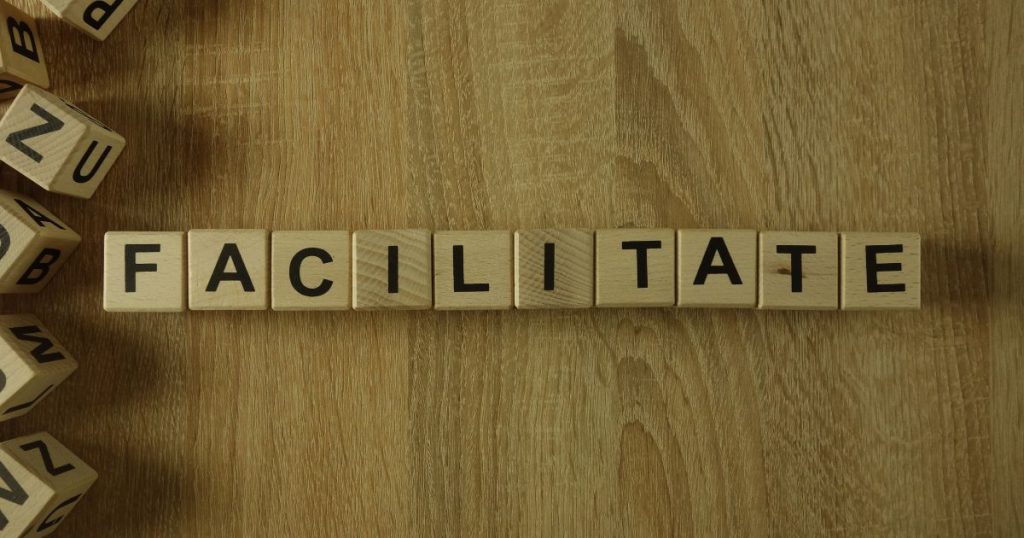Basic housekeeping for meetings is often overlooked! These simple things can make such a difference at the start of a meeting.
When a meeting is about to start, a facilitator has to set the tone for the rest of the session. A good way to do this is to let everyone know what you will cover in the meeting and also by creating a fun ice-breaking exercise that you can all do together.
But what about the absolute basics, the things that people won’t ask but need to know about?
Contents
- What is Housekeeping in a Meeting?
- Basic Housekeeping Items for Meetings
- 1. Where are the bathrooms?
- 2. Where are the refreshments? What’s the etiquette?
- 3. Will we have a break and what time?
- 4. What time will we be finished?
- 5. Is it rude if I keep my phone out on the table?
- 6. What’s the WiFi password?
- 7. Where are the emergency exits?
- 8. What’s the agenda? Establish the goals
- 9. Record-keeping and follow-up schedule
- 10: Use a short icebreaker (when appropriate)
- A Sample Housekeeping Agenda
- Meeting & Workshop Housekeeping for Meetings: Final Thoughts
What is Housekeeping in a Meeting?
Housekeeping in a meeting refers to the administrative tasks and procedures that need to be taken care of before, during, and after the meeting. The purpose of housekeeping is to ensure that the meeting runs smoothly and efficiently.
Basic Housekeeping Items for Meetings
Housekeeping in meetings is often overlooked. Keen facilitators jump straight into the agenda without considering people’s comfort and safety, especially during meetings in a new location or where guest are present.
Don’t forget about these simple housekeeping basics for facilitators to use at the beginning of a meeting, event or workshop:
1. Where are the bathrooms?
Don’t take it as a given that everyone knows how to find the bathrooms, especially if you’re in a venue that’s unfamiliar to most. Participants may not want to speak up during a session to ask, so tell everyone at the start to make everyone aware.
2. Where are the refreshments? What’s the etiquette?
If there are refreshments served at your meeting, workshop or event, tell participants the etiquette for self-service. For example, can people help themselves during the event or are refreshments only available at fixed times?
Small things like this give people anxiety – so it’s best to inform everyone of the etiquette regarding the refreshments as early as possible.
3. Will we have a break and what time?
If you have breaks scheduled, tell people what time they’re scheduled for at the start of the meeting. This helps people stay focussed and aware of what’s going on.
4. What time will we be finished?
People are busy, you know? They’ve got places to be, people to see and things to do! It’s important to let them know the expected finish time so people can mentally plan their day.
5. Is it rude if I keep my phone out on the table?
In some meetings, it’s perfectly acceptable (and encouraged) to keep your phone out. In other meetings, it’s rude to do so. Set the record straight on this right at the start.
Also, remind people to turn their phones and devices onto silent or vibrate so they don’t disturb the discussions. There’s always one social media enthusiast with notifications pinging every few minutes!
6. What’s the WiFi password?
Forget about the bathrooms and the food… WiFi – it’s a basic human need.
If there’s WiFi available – write the password up somewhere visible for everyone to see. It avoids having to answer the same question 20+ times as you can just point to the password on the wall instead.
7. Where are the emergency exits?
It’s best practice to highlight the location of the emergency exits during public meetings, especially if people are visiting the venue and are not permanent employees.
8. What’s the agenda? Establish the goals
What can we expect from today? What’s the atmosphere going to be like? What will we have all achieved by the end of this?
Answer these questions at the start, people won’t ask them out loud but they may be asking them silently.
9. Record-keeping and follow-up schedule
Defining the record keeping and follow-up process at the start of a meeting during housekeeping is important for several reasons:
- Sets clear expectations: By clearly stating the process for record keeping and follow-up at the beginning of a meeting, everyone knows what to expect and what their responsibilities are. This helps to ensure that everyone is on the same page and that the meeting runs smoothly.
- Increases accountability: When the process for record keeping and follow-up is clearly defined at the start of a meeting, participants are more likely to take their responsibilities seriously and to follow through on action items.
- Improves accuracy: By documenting the meeting as it happens, the chances of important details being overlooked or forgotten are reduced. This helps to ensure that the record of the meeting is accurate and can be referred to later.
10: Use a short icebreaker (when appropriate)
Icebreakers are a fun and engaging way to start a meeting in a relaxed way.
Check out our list of participative icebreakers to use is meetings.
A Sample Housekeeping Agenda
There’s no need to overcomplicate this. On your facilitator’s session plan, right at the top add this simple housekeeping agenda:
Meeting Housekeeping Items
- Welcome
- Basic housekeeping
- Bathroom location (for visitors or in new venues)
- Refreshments and etiquette (wait for the break, or help yourself?)
- Breaktimes and finish times (helps people mentally prepare)
- Etiquette about phone use (ask people to keep them on silent)
- WiFi password (for visitors or in new venues)
- Emergency exit locations and procedures
- Today’s agenda – an overview
- Record keeping – who is taking notes and when will they be circulated?
- Brief introductions – around the group
- Short icebreaker – if appropriate
Meeting & Workshop Housekeeping for Meetings: Final Thoughts
To recap, your first moments with a new group of people are important. You have to quickly establish a positive tone and help everyone feel comfortable with each other and the meeting’s purpose.
People don’t like meetings. They’re often boring and unnecessary, or they run late and don’t accomplish anything of value. One way to change this—to make meetings more productive, entertaining, and energizing—is to get the meeting started in just the right way.
It’s important to start your meeting right. There’s nothing worse than a meeting that doesn’t start well. Make sure meetings go off without a hitch and get the most out of the time that you spend in those meetings with these simple housekeeping steps.



